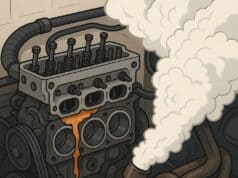
A serious motorcycle crash in Florida can change everything in a few seconds. Medical bills, missed shifts, and rehabilitation costs build up fast. In that chaos, insurance adjusters sound calm and helpful. However, their job is different from their tone; they are paid to close the file cheaply, not to rebuild a rider’s life. The more they trim from medical care and lost wages, the better it is for their company. Here are common tactics they use.
- Fast lowball offers before the full medical picture is clear
One common move is to call quickly with a settlement offer. The insurer knows hospital bills are piling up, and income may be interrupted. A check can feel like relief, but it usually comes before specialists have mapped out problems like nerve damage or brain injury. Consulting with an experienced Florida motorcycle crash lawyer shows how far an early offer falls below a fair value.
- Shifting the blame onto the rider to cut the payout
Adjusters often dig for any detail that makes the rider look partly at fault. They may focus on dark clothing, lane position, or speeding, while downplaying a driver who turned left across the bike or checked a phone.
Even small percentages of fault can quietly reduce what is paid. Careful accident reconstruction, witness statements, and camera footage help reset the story to what actually happened on the road.
- Minimizing invisible injuries and long-term pain
Insurance companies like injuries that heal neatly. They are less generous when the main harm is soft tissue damage, concussion symptoms, or pain that flares with movement months later. Files may label these problems as minor or unrelated.
In reality, chronic pain, migraines, and balance issues can end riding and change work options. Consistent medical documentation and clear descriptions of limits in daily activities help show how serious these injuries really are.
- Using treatment gaps and daily struggles against the claim
Many riders miss appointments because of transport issues or work schedules. Insurers may seize on these gaps to argue that injuries are exaggerated or that recovery is complete. They can also cherry-pick moments from social media to argue that life is back to normal. Keeping a simple log of symptoms, flare-ups, and bad days creates a timeline that supports medical notes and counters the idea that healing was quick or easy.
- Delaying and complicating the process until riders give up
Insurers also rely on simple exhaustion. They request the same records more than once, send long letters, and change adjusters midway through the claim. Calls are missed, messages pile up, and each new step feels heavier.
All of this happens while the injured person is trying to heal and protect their income. After months of delay, even a weak offer can start to feel like the only way to move forward.
Endnote
Serious motorcycle injuries change more than a riding season. They alter careers, family roles, and daily routines. Insurance companies protect their own bottom line, not long-term recovery. Spotting lowball offers, blame shifting, and delay tactics is a first line of defense. Careful records, medical care, and early legal guidance help keep a claim grounded in needs instead of insurance talking points, so injured riders have a fair shot at rebuilding life after a crash.





